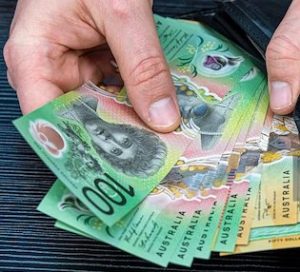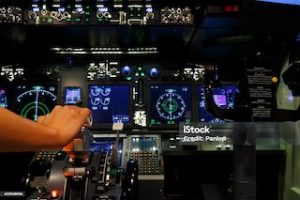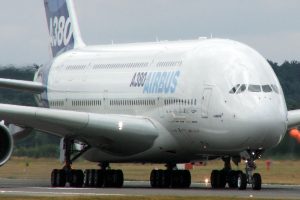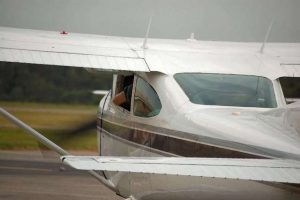GBP To INR Exchange Tracking For Airline Pilots
 Airline pilots who earn or spend in both pounds and rupees must track the GBP to INR rate each day. Currency shifts affect pay, savings, and expenses. By following the rate closely, pilots make smarter choices. Simple tools and regular checks help maximize the value of each transfer or conversion.
Airline pilots who earn or spend in both pounds and rupees must track the GBP to INR rate each day. Currency shifts affect pay, savings, and expenses. By following the rate closely, pilots make smarter choices. Simple tools and regular checks help maximize the value of each transfer or conversion.
GBP to INR daily rate checks keep pilots informed
Pilots watch the live rate of GBP to INR each morning. This habit gives them a clear view of current trends. Even small changes affect budgets. Daily checks build awareness. They help pilots stay ready to send money or hold off. With this information, pilots manage their earnings with more confidence.
Track GBP to INR Using Currency apps
Mobile apps give fast access to live rates. These tools show accurate GBP to INR values without delay. Pilots can check rates while in the cockpit lounge or hotel. Notifications keep them alert to shifts. Apps also log past rates for review. They offer a fast, reliable solution.
Watch for rate fluctuations
Rates between GBP and INR shift often. A strong pound brings more rupees per transfer. A weak pound means lower value. Pilots monitor trends daily to catch gains. This helps in planning transfers. They wait for better days instead of rushing conversions.
Use browser-based currency trackers
Desktop currency sites give pilots another tracking option. These platforms update rates in real time. Pilots use them during planning or invoicing. Many platforms also offer conversion history. Pilots learn from these past trends. Rate charts add clarity to decisions.
Avoid guessing when sending money
Pilots should not guess exchange values. Smart decisions rely on real data. Currency trackers remove uncertainty. Pilots know how much their rupees or pounds are worth. This improves every transfer. Better timing leads to stronger earnings.
Set alerts for GBP to INR Shifts
Alerts save time. Currency apps send updates when the pound strengthens. Pilots act fast when rates improve. These alerts make it easier to manage transfers. Pilots do not need to check the rate every hour. The system does it for them.
Choose transfer times with more value
Pilots send money when the rate favors them. They track trends and use alerts. A strong pound increases rupee value. By waiting for the right time, they gain more. Pilots avoid low-rate days to protect earnings. Patience turns into extra cash.
Use multiple rate sources
No single platform gives perfect data. Pilots compare two or more tools. This helps confirm rate accuracy. They look for small differences. If rates match, pilots feel confident. If not, they check again. Multiple tools reduce errors and improve trust.
Log exchange rates in a journal
A simple notebook helps track trends. Pilots write the daily rate and date. Over time, this shows patterns. Pilots make smarter plans by reviewing the log. Paper records help compare current rates with past values. A clear history supports strong decisions.
Compare mid-market and bank rates
Mid-market rates reflect real currency value. Banks often show lower values. Pilots use apps to find the mid-market rate first. Then they compare it with their bank’s rate. This shows how much value they lose in a bank transfer. Better choices save more money.
Avoid airport and local exchange counters
Exchange booths near airports rarely offer good rates. Pilots avoid them when possible. Currency apps reveal how low the rate is. If it is too low, pilots wait or choose digital transfers. These choices help preserve more of the converted amount.
Understand the impact of rate fees
Some platforms add fees inside the rate. Pilots may not notice unless they check closely. Apps often list real GBP to INR values. With this, pilots know what they lose in hidden costs. They avoid services that offer poor returns.
Link exchange tools with payment apps
Pilots link currency trackers with wallet apps. This makes it easy to act when the rate shifts. A few taps send or convert money. These tools remove delays. Pilots can manage money between flights without stress.
Use desktop dashboards for deeper review
At home, pilots open dashboards on larger screens. Bigger charts show long-term rate patterns. Pilots plan bigger transfers with these tools. They review monthly and yearly trends. This supports bigger financial goals. Dashboards offer more than mobile apps.
Work with currency experts for support
Some pilots use financial advisors. These professionals explain how rates affect savings. Advisors may suggest timing and tools. Pilots listen and compare this advice with live app data. Working together helps them earn more and lose less.
Study government and bank rate policies
National banks affect currency strength. Pilots watch announcements from the Bank of England or Reserve Bank of India. These reports often lead to rate shifts. Pilots act before or after such news. Staying informed helps with rate timing.
Avoid transfers during unstable markets
Big global events shake exchange rates. Pilots watch the news to plan ahead. During market panic, rates swing wildly. Pilots wait for calm to return. This protects them from poor conversions. Stability leads to better rates.
Use forecast tools with caution
Some platforms predict future rates. Pilots review these with care. Forecasts help set rough plans but should not drive all decisions. Real-time values matter more. Still, trends offer insights into possible future changes.
Track contract payments with exchange logs
Pilots who freelance track payments by rate. They record how much a payment was worth in pounds. This helps with taxes and reports. Logs show how rates affected monthly income. They also help compare past flights to present work.
Prepare monthly budgets in pounds and rupees
Pilots use both currencies often. They write budgets in dual columns. This shows how many rupees match the pounds. Currency tools update these values daily. Budgets become clearer and easier to follow. This keeps spending under control.
Review rate trends each week
Weekly review helps spot bigger trends. Pilots spend a few minutes each weekend checking the charts. They mark strong or weak points. These insights support bigger money decisions. Weekly tracking keeps them ahead of market changes.
Use smartwatch tools for quick updates
Some apps send updates to a smartwatch. Pilots see rates with a quick glance. This helps during flights or meetings. Short updates reduce the need for full checks. Pilots stay informed without slowing down.
Share rates with family or partners
If pilots support family across borders, rates matter. They share current rates with their loved ones. This helps them plan spending or transfers. Everyone stays on the same page. Shared tools bring shared success.
Keep screenshots for large transfers
When making a big transfer, pilots take a screenshot of the rate. This supports bank checks or records. It proves the rate at the time of transfer. Screenshots reduce confusion later.
Try new apps as features improve
Currency apps improve often. Pilots try new tools to gain more accuracy or speed. Some offer new alert styles. Others offer bank linking. Exploring helps find the right fit. Better tools mean better tracking.
Avoid guessing future exchange value
Even if pilots track trends, they avoid guessing future rates. They focus on current value. Guessing can lead to bad timing. Real data supports better choices. Tools reduce the urge to predict.
Watch rate gaps during holidays
Currency markets slow during holidays. This can widen the rate gap. Pilots plan big transfers around holidays. They wait for markets to return to normal. A few days can make a big difference.
Use clean layout tools for less stress
Apps with clean displays reduce confusion. Pilots want to see the GBP to INR rate fast. No ads or popups. Simple tools work best. Clarity saves time and energy.
Sync currency tools with flight schedules
Pilots match rate checks with travel. Before a new route, they check the rate. This helps in planning local expenses. It also supports transfer timing. Planning around flights brings better control.
Build a habit of checking once a day
Currency tracking works best as a habit. Pilots make it part of their day. A short check each morning sets the tone. It prepares them to act when needed. Habits lead to steady money success.
Smart flight money moves made easy
Pilots who track the GBP to INR rate daily gain more value. With simple tools and smart habits, they reduce losses and improve planning. Each update brings them closer to smarter transfers, better savings, and more financial control—wherever their flights may take them.









